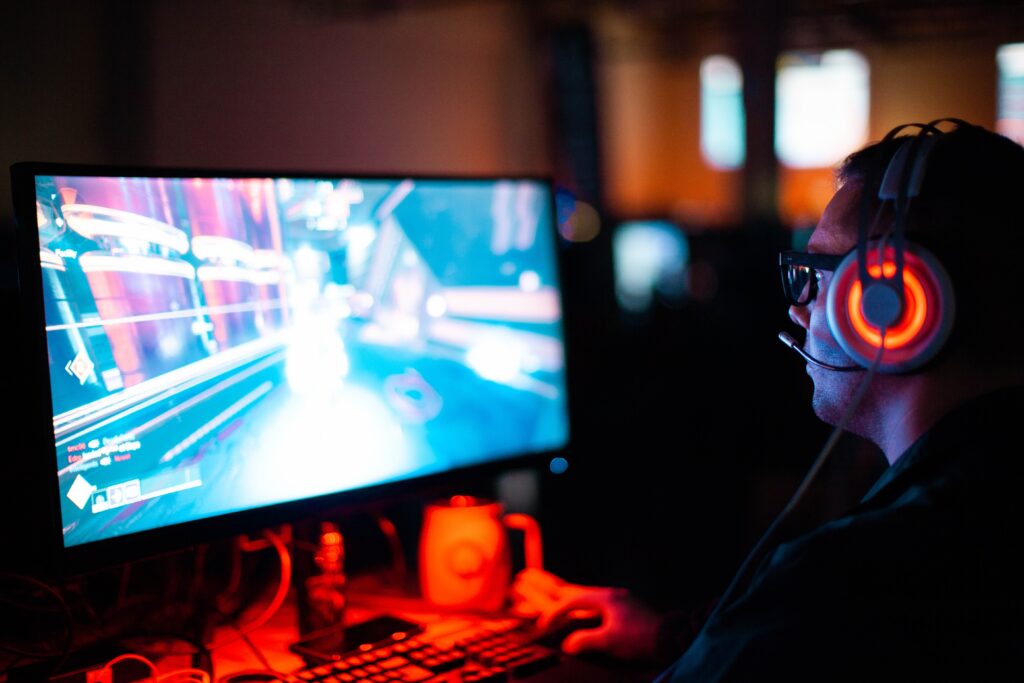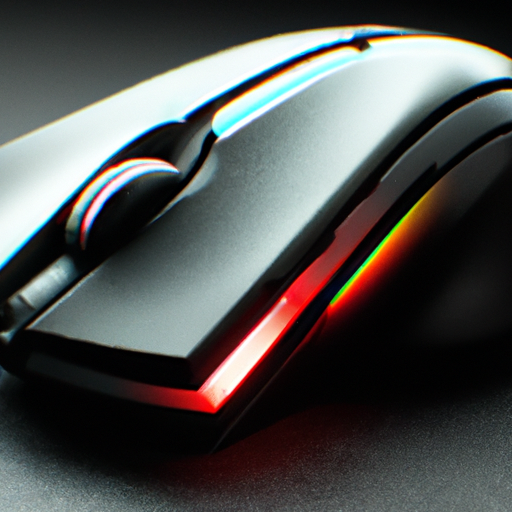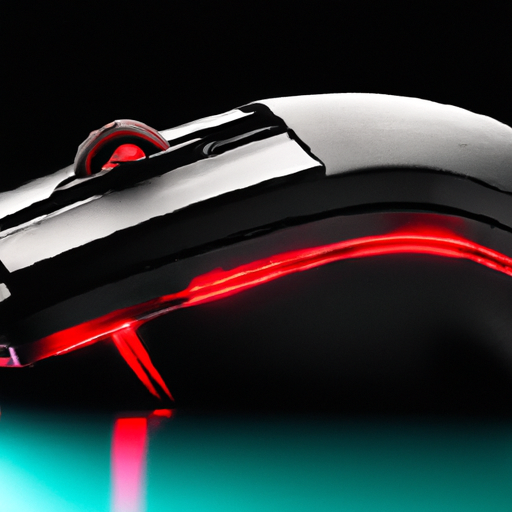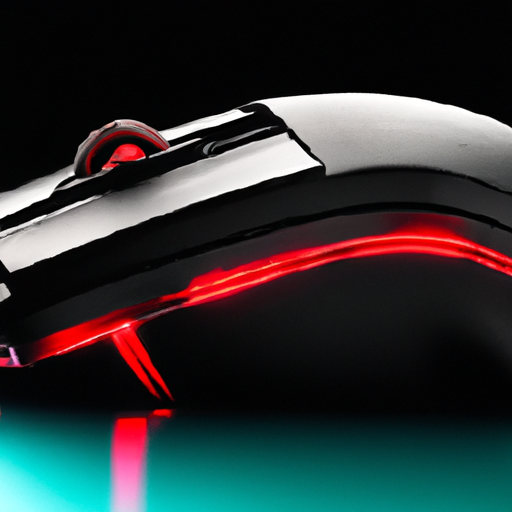What Is The Best DPI Setting For A Gaming Mouse? 10 Factors to Consider
Imagine you’re in the heat of intense gaming, your fingers moving swiftly across the keyboard, and your eyes fixed on the screen. In this fast-paced world, having the perfect DPI setting for your gaming mouse can make all the difference. But what exactly is DPI, and what is the best DPI setting for A gaming mouse? In this article, we will explore the world of DPI and guide you toward choosing the best DPI setting for your gaming mouse, ensuring an enhanced gaming experience like never before. So, let’s dive right in!
What Is The Best DPI Setting For A Gaming Mouse: Factors to Consider
When choosing the best DPI setting for your gaming mouse, there are several factors that you should take into consideration. These factors will help you determine the optimal DPI for your gaming style and preferences.
Game Genre
The game genre you primarily play is an important factor to consider when selecting the DPI setting for your gaming mouse. Different game genres have varying levels of required precision and sensitivity. For example, first-person shooter (FPS) games often require quick and precise movements, while real-time strategy (RTS) games may benefit from slower and more controlled movements. Understanding the demands of your preferred game genre can guide you in finding the right DPI setting.
Monitor Resolution
Your monitor’s resolution is another factor that can impact your DPI selection. Higher resolutions typically require higher DPI settings to ensure smooth and accurate cursor movements. If you have a higher resolution monitor, such as a 1440p or 4K display, you may need to increase your DPI to maintain responsiveness and precision. On the other hand, if you have a lower resolution monitor or play games in windowed mode, a lower DPI may suffice.
Personal Preference
Everyone has their own personal preference when it comes to mouse sensitivity. Some gamers prefer a higher DPI setting, which allows for faster cursor movements with minimal physical effort. Others might prefer a lower DPI setting, which offers greater control and precision at the cost of cursor speed. Considering your personal preference and comfort level is crucial in finding the best DPI setting for your gaming experience.
Mouse Sensor
The sensor technology in your gaming mouse can also influence your choice of DPI setting. There are generally two types of sensors found in gaming mice: optical and laser. Optical sensors are known for their accuracy and reliability, while laser sensors offer higher DPI ranges and can work on a wider variety of surfaces. Understanding the capabilities and limitations of your mouse sensor can help you make more informed decisions when selecting the appropriate DPI setting.
Mouse Pad
Believe it or not, your choice of mouse pad can impact your mouse sensitivity and influence the ideal DPI setting for your gaming mouse. Different mouse pad surfaces can provide varying levels of friction, which in turn affects the speed and precision of your mouse movements. A cloth mouse pad, for example, might offer more control but may require a higher DPI to compensate for the increased resistance. Conversely, a hard surface mouse pad might allow for smoother gliding, potentially requiring a lower DPI. Considering your mouse pad material and its impact on sensitivity can be a valuable factor in determining your ideal DPI setting.
What Is The Best DPI Setting For A Gaming Mouse: Understanding DPI
Before delving into finding the best DPI setting for your gaming mouse, it’s essential to understand what DPI actually means and how it affects your mouse movement.
Definition
DPI stands for “dots per inch” and refers to the sensitivity of your mouse. It measures how many dots or pixels your cursor will move on the screen for every inch you move your physical mouse. A higher DPI setting means your cursor will travel more pixels with a single movement, resulting in faster and more responsive cursor movements. Conversely, a lower DPI setting will make your cursor move fewer pixels, leading to slower and more controlled movements.
How DPI Affects Mouse Movement
The DPI setting on your gaming mouse directly affects the speed and sensitivity of your cursor movements. If you have a higher DPI setting, you’ll notice that your cursor moves faster across the screen with minimal physical effort. This can be advantageous in games that require quick reflexes and swift movements, as it allows you to react more rapidly. On the other hand, if you have a lower DPI setting, your cursor will move slower, offering greater control and precision. This can be advantageous for tasks that require meticulous targeting or fine adjustments.
Common DPI Ranges
Gaming mice usually offer a range of DPI options to accommodate various preferences. The DPI range can vary from as low as 200 DPI to as high as 16,000 DPI, depending on the model and brand of the mouse. However, keep in mind that higher DPI doesn’t necessarily mean better performance. The ideal DPI setting for you will depend on factors such as your monitor resolution, game genre, and personal preferences. Experimenting with different DPI ranges can help you find the sweet spot that suits your needs.

What Is The Best DPI Setting For A Gaming Mouse: Finding the Right DPI
Now that you understand the factors involved and have a grasp of DPI, let’s explore the process of finding the right DPI setting for your gaming mouse.
Starting Point
If you’re unsure where to begin with your DPI settings, a general starting point is to set it at 800 DPI. This is often considered a balanced and versatile DPI setting that can work well across various game genres and applications. From here, you can tweak the DPI up or down based on your preferences and the factors we discussed earlier.
Adjusting DPI Based on Game Genre
As mentioned earlier, different game genres have different demands when it comes to mouse sensitivity. For FPS games that require quick reflexes and precise aim, you may want to increase your DPI to achieve faster cursor movements. On the other hand, RTS or strategy games that prioritize accurate clicks and controlled movements may benefit from lower DPI settings. Observing the play style and requirements of your preferred game genre can guide you in adjusting your DPI accordingly.
Fine-tuning DPI for Accuracy
Once you’ve established a baseline DPI setting, it’s important to fine-tune it to suit your accuracy needs. This involves testing various DPI settings while performing tasks that require precision, such as aiming at small targets or making precise movements in-game. Gradually adjust your DPI up or down and pay attention to how well you can hit your targets consistently. By iteratively experimenting with different DPI values, you can find the DPI setting that allows you to achieve the highest level of accuracy.
Testing and Experimentation
Finding the perfect DPI setting is not an exact science and may require some trial and error. Take the time to test different DPI settings during actual gameplay or in scenarios that closely resemble your typical gaming sessions. Pay attention to how your cursor movements feel and perform during fast-paced moments as well as when aiming at smaller targets. By experimenting and observing the impact of different DPI settings on your performance, you can fine-tune your DPI to maximize your gaming experience.
Lower DPI vs Higher DPI
Both lower DPI and higher DPI settings have their advantages, and the choice between them ultimately depends on your personal preferences and gaming style. Let’s explore the benefits of each.
Advantages of Lower DPI
Lower DPI settings tend to offer greater control and precision in cursor movements. This can be beneficial in games that require accurate targeting or in tasks that demand more finesse, such as photo editing or graphic design. With lower DPI, you can make small and precise adjustments to your aim without the risk of overshooting or losing control. Lower DPI settings also tend to be less prone to unwanted cursor movements caused by hand tremors or accidental mouse twitching.
Advantages of Higher DPI
Higher DPI settings excel in situations where speed and responsiveness are paramount. In fast-paced games that require quick reflexes and rapid movements, a higher DPI can help you navigate the screen more efficiently. The increased cursor speed allows you to react faster to sudden changes in the game environment or evade incoming threats swiftly. Higher DPI settings can also be advantageous for users with larger monitors or higher resolution displays, where a lower DPI might result in sluggish cursor movements.

Recommended DPI Settings for Different Game Genres
While personal preferences play a significant role in determining the ideal DPI setting, there are some general recommendations based on popular game genres. Keep in mind that these are rough guidelines, and individual preferences may vary.
First-Person Shooters
For FPS games, where accuracy and precision are crucial, a DPI setting between 800 and 1600 is often recommended. This range strikes a balance between cursor speed and precision, allowing for quick movements while maintaining control over aim. Adjusting within this range based on personal preference and the specific game’s requirements can further optimize the DPI for FPS gaming.
Real-Time Strategy
In RTS games that emphasize strategic planning and precise clicking, a lower DPI setting between 400 and 800 can offer better accuracy and control. The slower cursor movements allow for fine-tuned targeting and more controlled unit selection. This can be advantageous when managing multiple units or focusing on intricate map interactions.
MOBA
MOBA games, which rely on accurate cursor positioning and click accuracy, often benefit from a DPI setting between 800 and 1200. This range strikes a balance between precise clicking for skillshots and the ability to navigate the map swiftly. Higher DPI settings may make it challenging to consistently click on specific targets, while lower DPI settings may result in sluggish cursor movements during intense team fights.
Role-Playing Games
RPGs typically offer a mix of exploration, combat, and interface navigation. A DPI setting between 800 and 1200 can provide the versatility required for seamless gameplay. This range allows for smooth camera movements, precise menu selections, and fluid combat controls. Adjust the DPI within this range based on personal preference and the specific gameplay elements that require more precision or speed.
Action/Adventure
Action and adventure games often feature a combination of combat, platforming, and exploration. A DPI setting between 800 and 1600 is generally well-suited for these genres, as it allows for responsive cursor movements while ensuring precise aiming and platforming controls. Fine-tuning within this range can cater to individual preferences and the specific gameplay requirements of the particular action or adventure game.
Sports
Sports games, such as soccer or basketball simulations, emphasize smooth movements and precise controls. A DPI setting between 800 and 1200 is often recommended for these games, as it provides a good balance between responsiveness and control. This range allows for accurate aiming, smooth character animations, and precise passing or shooting.
What Is The Best DPI Setting For A Gaming Mouse: Matching DPI with Monitor Resolution
Your monitor’s resolution plays a significant role in determining the ideal DPI setting for your gaming mouse. Let’s explore the impact of different monitor resolutions on DPI selection.
1080p Resolution
For gaming on a standard 1080p resolution monitor, a DPI setting between 800 and 1600 is usually sufficient to maintain a responsive and accurate cursor. This range allows the cursor to move smoothly across the screen, even during rapid movements. Adjusting the DPI within this range can further optimize your gaming experience based on personal preference and the specific demands of your games.
1440p Resolution
If you have a higher-resolution monitor, such as a 1440p display, you may need to increase your DPI to maintain the same level of responsiveness and precision. A DPI setting between 1600 and 3200 is often recommended for 1440p monitors, as it compensates for the additional pixels and larger display area. This range ensures that your cursor moves quickly and accurately across the screen, even on the finer details and edges.
4K Resolution
Gaming on a 4K resolution monitor demands even higher DPI settings to account for the increased pixel density. Depending on personal preference and the specific game genre, a DPI setting between 3200 and 6000 is commonly used for 4K gaming. This range provides the necessary cursor speed and precision to handle the vast amount of pixels, ensuring smooth and accurate movements across the entire screen area.

Mouse Sensor and DPI
The sensor technology in your gaming mouse also influences the relationship between DPI settings and mouse performance. Let’s explore the impact of different mouse sensor types and their precision on DPI selection.
Optical vs Laser Sensors
Optical and laser sensors are the two main types of sensors found in gaming mice. Optical sensors use an LED light to track movement, while laser sensors use laser beams. While both types can offer excellent performance, they have slight differences in precision, acceleration, and compatibility.
Optical sensors tend to provide better precision and tracking on most surfaces, making them more suitable for gamers who prioritize accuracy. Laser sensors, on the other hand, can offer higher DPI ranges and are known for their versatility across different surfaces. When selecting your DPI setting, consider the capabilities and limitations of your mouse sensor to ensure optimal performance.
Sensor Precision and DPI
The precision of a mouse sensor refers to its ability to accurately translate physical movement into cursor movements on the screen. Higher precision sensors tend to offer smoother tracking and more consistent cursor movements at different DPI settings. When selecting your DPI, it’s important to consider the precision of your mouse sensor, especially if you play games that require precise aim or fine cursor control. A higher precision sensor can be particularly beneficial in tasks such as sniping in FPS games or precise editing in graphic design software.
What Is The Best DPI Setting For A Gaming Mouse: Importance of Mouse Pad
While the DPI selection plays a significant role in mouse sensitivity, the type of mouse pad you use can also impact your overall gaming experience. Let’s explore the importance of choosing the right mouse pad.
Impact on Mouse Sensitivity
Mouse pads can influence the friction and surface texture that your mouse glides on. Different mouse pad materials, such as cloth, hard surface, or hybrid variants, offer varying levels of resistance and smoothness. These factors can affect the overall mouse sensitivity and the amount of physical effort required to move the cursor.
Choosing a mouse pad that complements your DPI setting is important for maintaining a consistent gaming experience. A mouse pad with low friction, such as a hard surface pad, can enhance the speed and responsiveness of a higher DPI setting. Conversely, a mouse pad with more friction, such as a cloth pad, can provide better control and precision for lower DPI settings.
Choosing the Right Mouse Pad
Selecting the right mouse pad for your gaming setup involves considering factors such as material, surface texture, and size. Cloth mouse pads are generally more popular due to their balance of speed and control, as well as their ability to work well with a wide range of mouse sensors. Hard surface mouse pads, on the other hand, offer smoother gliding and can be well-suited for higher DPI settings. Experimenting with different mouse pad options and finding one that offers the right balance for your DPI selection can enhance your overall gaming experience.

Adjusting Mouse DPI Settings
Now that you understand the factors involved and how to find the right DPI setting for your gaming mouse, let’s explore the different methods of adjusting the DPI.
Windows Settings
You can adjust your mouse DPI settings directly in the Windows operating system. Access the Control Panel or the Settings menu, and navigate to the mouse settings section. Here, you can usually find a slider or numerical input field to control the DPI. Adjust the DPI and test it in various games or applications to find the optimal setting that suits your needs.
Mouse Software
Many gaming mice come with dedicated software that allows you to customize various settings, including DPI. The software provided by the mouse manufacturer gives you more precise control over your DPI settings, often allowing you to set up multiple DPI profiles that can be switched on the fly. The software also provides additional customization options, such as acceleration, polling rate, and button assignments. Take advantage of the mouse software to fine-tune your DPI settings and customize your gaming experience to your liking.
On-the-Fly DPI Adjustable Mice
Some gaming mice offer on-the-fly DPI adjustment, allowing you to change the DPI setting during gameplay without accessing software or operating system settings. These mice often feature dedicated buttons or a DPI switch on the mouse itself, allowing you to cycle through predefined DPI settings quickly. This feature can be particularly useful in games that require different levels of sensitivity for different scenarios, such as sniping or fast-paced combat.
What Is The Best DPI Setting For A Gaming Mouse: Conclusion
Choosing the best DPI setting for your gaming mouse is a highly personalized process that depends on several factors. Game genre, monitor resolution, personal preferences, mouse sensor, and mouse pad are all important considerations in finding the optimal DPI for your gaming style. Understanding the impact of DPI on mouse movement and its relationship with monitor resolution can help you make more informed decisions. Experimentation and testing different DPI settings are key to finding the perfect DPI for your gaming needs. Remember, there is no universally correct DPI setting, and what works for one person may not work for another. Trust your own comfort and performance to guide you in finding the best DPI setting for your gaming mouse.





